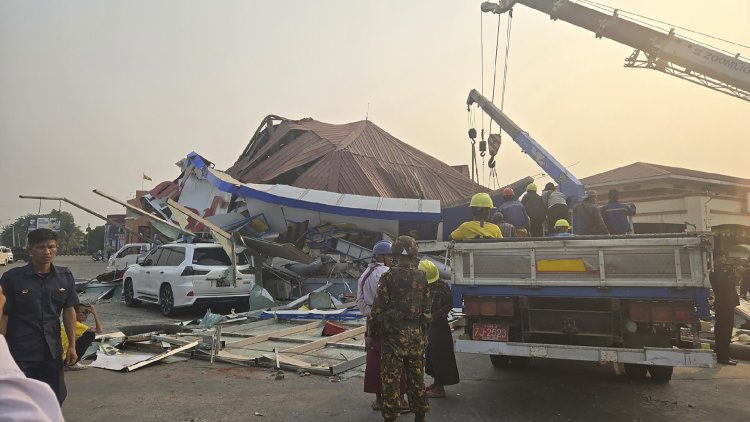Over 1,000 People Dead in Myanmar Earthquake; Initiates Worldwide Aid Efforts
As of Saturday morning, Myanmar's State Administration Council Information Team reported that a devastating earthquake in the Mandalay region has resulted in 1,002 fatalities, 2,376 injuries, and 30 individuals missing.

The earthquake, which registered a magnitude of 7.7, caused significant infrastructure damage and led to the collapse of numerous buildings, as reported by local authorities. Much of the destruction was concentrated in Mandalay, the country's second-largest city, situated near the quake's epicenter. The earthquake struck during lunchtime and was followed by a powerful aftershock and several moderate tremors.
The seismic event was also felt in neighboring countries, including Thailand, China, and Laos.
Experts have warned of the potential for severe impacts, including aftershocks. A U.S. government analysis estimated that the quake could lead to thousands of fatalities and significant economic losses, particularly in the Sagaing and Meiktila regions.
State media reports indicated that the quake resulted in the collapse of buildings across five cities and towns, as well as extensive damage to a railway bridge and a road bridge on the Yangon-Mandalay Expressway. Photographs revealed significant destruction, including the Ava Bridge over the Irrawaddy River, which was seen with its arches leaning precariously into the water.
"The impact of the earthquake in Myanmar is likely to be severe, with possibly thousands of displaced people in need of urgent shelter, food and medical aid," remarked Mohammed Riyas, regional director of the International Rescue Committee. He also expressed concerns that it could take weeks to fully assess the extent of the destruction due to disrupted communication networks and transportation challenges.
Wang Tun, director of the Natural Disaster Early Warning Research Center at Sichuan University, noted that aftershocks would continue to affect the region.
In response to the disaster, UN Secretary-General Antonio Guterres announced that the United Nations is mobilizing efforts in Southeast Asia to assist those affected. A UN spokesperson confirmed the allocation of $5 million in emergency aid, while additional needs are being evaluated and the response is being coordinated.
China has expressed its readiness to provide humanitarian assistance to the affected areas. A spokesperson for the Chinese Foreign Ministry stated that, as a friendly neighbor of Myanmar, China is closely monitoring the situation and has extended sincere sympathies.
On Saturday morning, a medical rescue team consisting of 37 members from China arrived in Yangon, with two more teams – the professional earthquake rescue team, China Search and Rescue, and the country's largest volunteer group, Blue Sky Rescue – en route.
Earlier on Friday, U.S. President Donald Trump addressed the situation from the White House, sharing that he had been in communication with officials in Myanmar and that his administration would offer support. "We're going to be helping," he stated to reporters.
Despite ongoing efforts to scale back the U.S. Agency for International Development (USAID) and cut nearly all remaining jobs, State Department spokesperson Tammy Bruce emphasized that USAID disaster experts are prepared to provide essential assistance, including food and potable water. "USAID has maintained a team of disaster experts with the capacity to respond if disaster strikes," she confirmed in a press briefing. "We are ready to move now. There has been no impact on our ability to perform those duties, those requests for aid, if and when they come in."
Allen M Lee for TROIB News
Find more stories on Business, Economy and Finance in TROIB business












